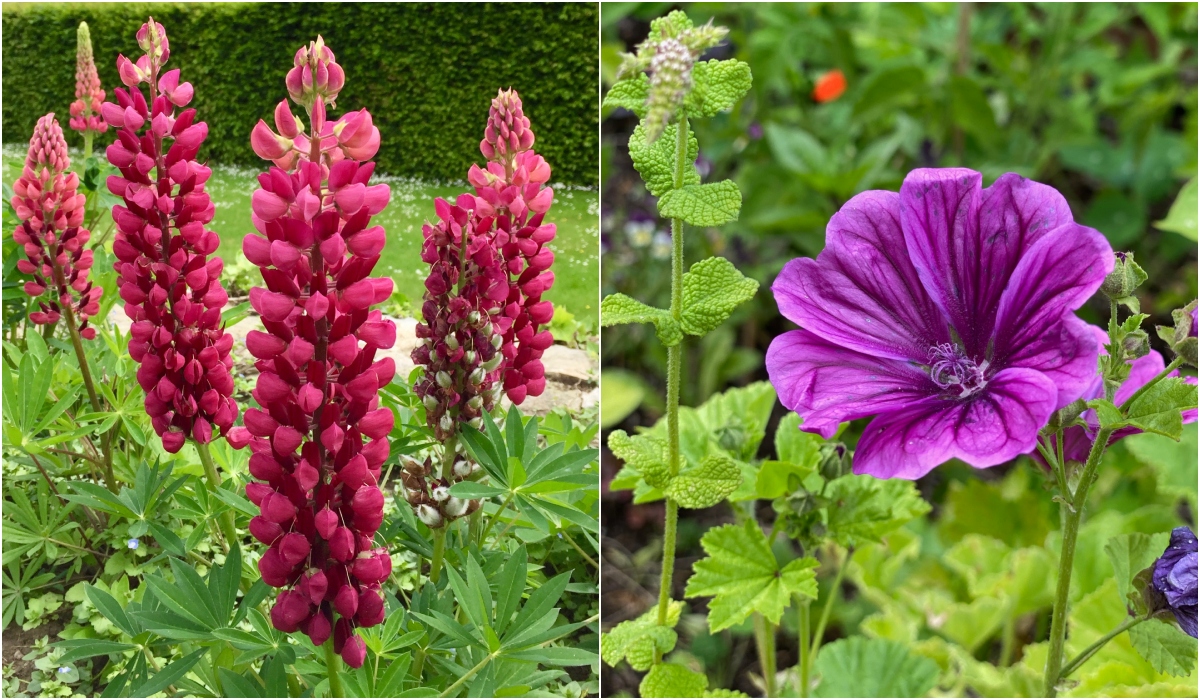
Tell me if this story sounds familiar. You love perennials, so you court them assiduously. In return, they reward your efforts with an abundance of beautiful flowers.
You think your relationship is on the right path, so there’s no doubt in your mind that those perennials will be around forever. Until one year, when your flowers just don’t seem to come back with the same passion and vigor. Where has the love gone?
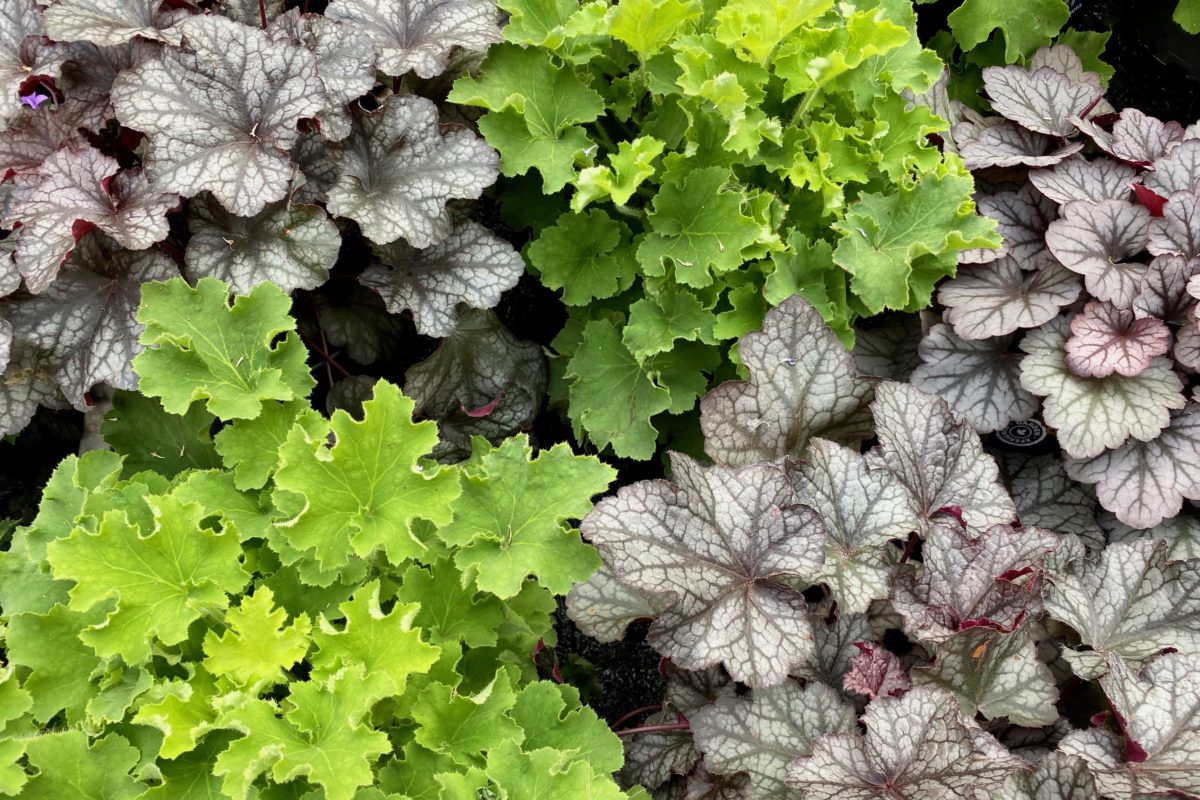
You did nothing wrong, my gardening friend! But you may have invested a bit too much in a subcategory of perennial plants called “short-lived perennials.”
Short-lived perennials are a textbook case of the “it’s not you, it’s them” gardening scenario.
So if you’ve ever felt sorry for yourself for killing yet another plant that was labeled perennial, I hope this article will take a bit of guilt off your shoulders. It wasn’t your brown thumb that did the deed (the brown thumb is just an excuse, anyway), it was nature’s way.
What are short-lived perennial plants?
For a plant to be considered perennial, it has to live for more than two years. So the bar to entry isn’t very high, to begin with.
If you’ve ever seen a tall gnarly rose bush growing next to an old house or have inherited a cluster of peonies that have been tended by three generations of gardeners before you, you’ll know that some perennials can live for decades. But the short-lived perennials that we’ll be talking about in this article often live for just three to five years.
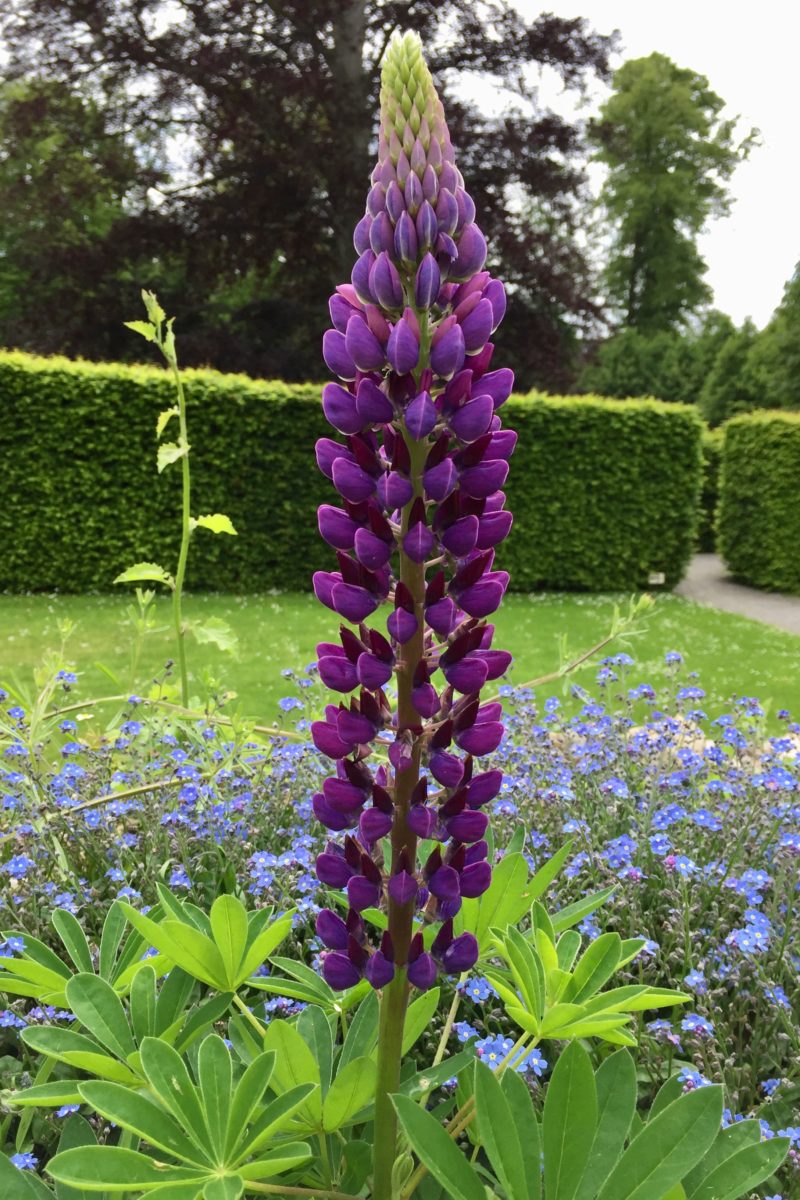
Some gardeners classify any perennial that lives less than ten years as short-lived. But I think the fact that most perennials rarely pass the five-year mark without some sort of division that resets the clock makes the ten-year mark seem a bit too stretched.
But short-lived perennials don’t come with an expiration date set in stone. What happens is over time, the plant starts flowering less and less. The blooms will either be smaller or there will be fewer of them.
Sometimes, the difference is not noticeable for years, until all of a sudden the plant just gives up. Very much depends on factors such as light and water availability, the richness of the soil and, of course, the climate that the plant is growing in.
Is a short-lived perennial plant the same as a biennial plant?
No, these two categories are not the same thing. A biennial (as we discussed in this article) only flowers once before it dies, whereas a short-lived perennial will flower multiple years in a row.
However, some short-lived perennials may be grown as biennials on purpose, especially the ones that have a noticeable decline in bloom quality from the first to the second year. This is often the case with Arctic poppies (Papaver nudicaule), for example (the last item on our list).
Another reason why you grow short-lived perennials as biennial is if you grow them in pots. Coral bells (Heuchera) are a good example of this practice.
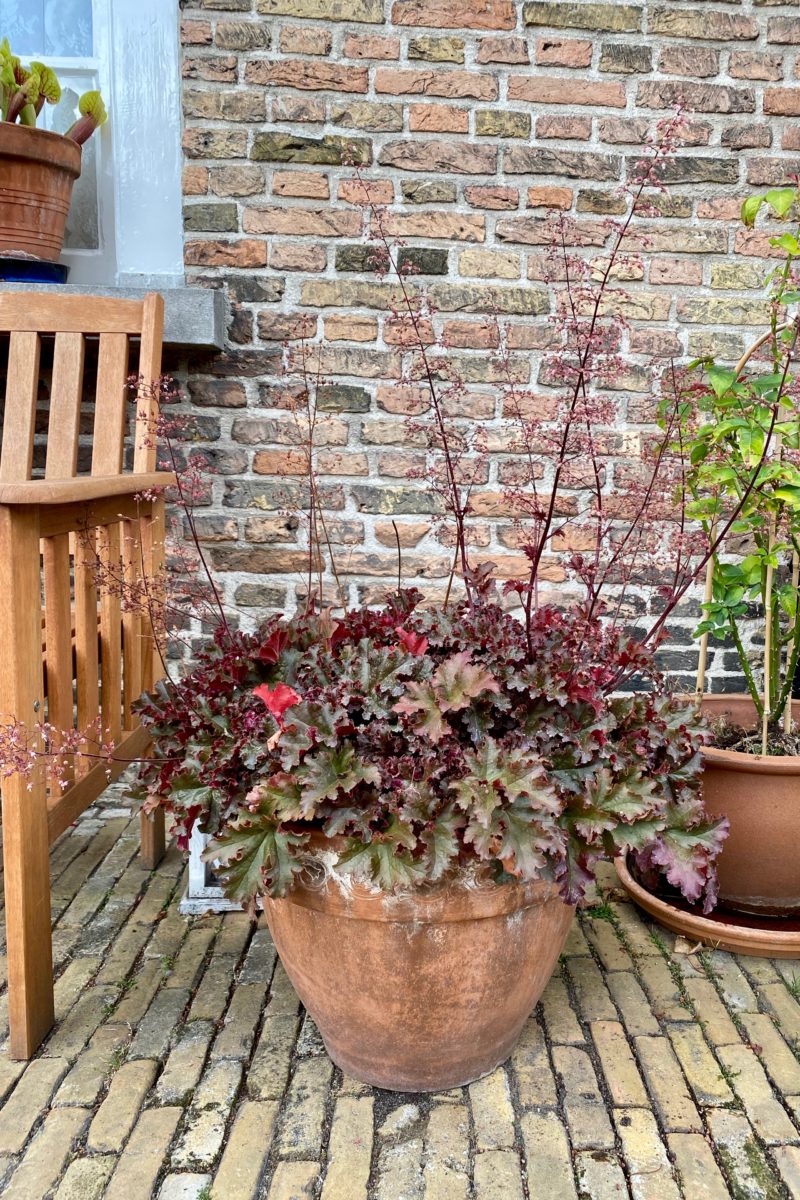
How do I extend the life of short-lived perennials?
There’s no such thing as a fountain of youth for short-lived perennials. And if you’re tempted to douse them in fertilizer, please don’t. That’s not how this works.
If you want to extend the life of short-lived perennials, you can either:
- Let them go to seed and reseed themselves;
- Collect the seeds yourself and start new baby plants indoors, then transplant them to different spots in the garden;
- Dig out, lift and do a root division of the plant. Then replant it or transplant.
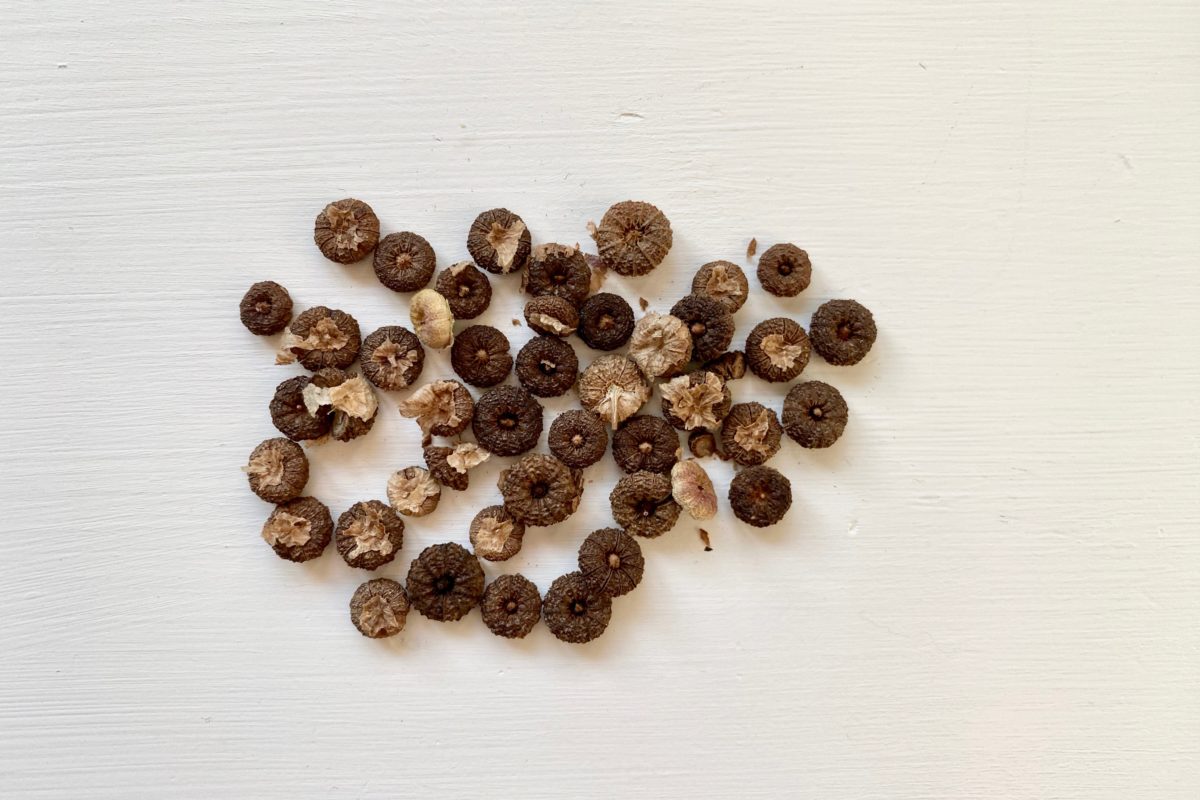
You may have spotted that all of these are methods for making new plants, rather than extending the life of the original plant that has lost its oomph. This is really the most reliable way to garden using short-lived perennials.
However, the real trick to keeping the garden lush and rich in blooms is to always be one step ahead of these short-lived plants. Don’t wait for a noticeable decline in flowers before you start new ones. Luckily, most of the plants on the list below will even do that job for you if you let them go to seed.
Here are ten popular short-lived perennials and how to keep them blooming longer.
1. Lupine (Lupinus)
If you’ve ever seen a patch of lupines, you’d be tempted to assume they’ve been there since dinosaurs walked the Earth. They just look so sturdy and hardy. In fact, lupines peak about five years after you first plant them. After that, their flowering displays slowly decline in intensity and duration.
The good news is that lupines are easy to start from seed – the seeds are just as chunky and robust as the plant itself. (Fun fact: they’re also edible and they’re commonly consumed as pickled legumes or ground into flour. They can also be toxic if prepared incorrectly, so don’t experiment without professional supervision.)
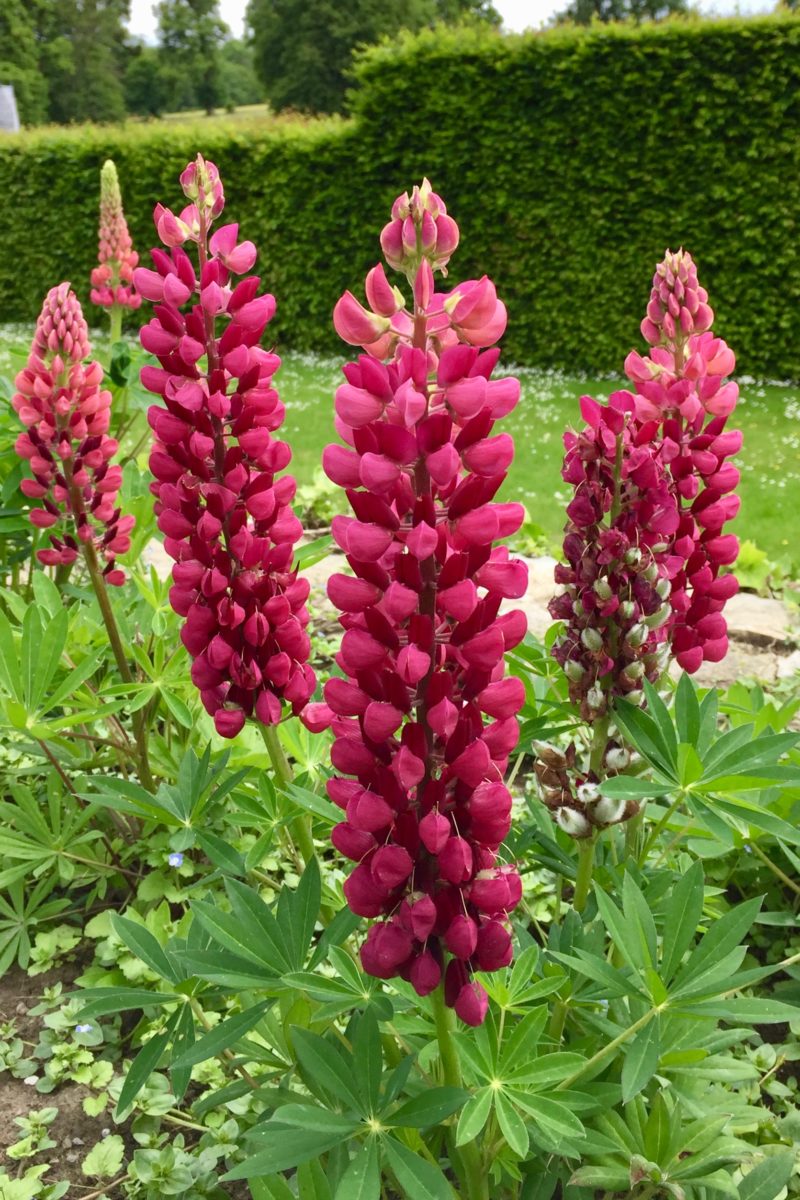
Lupines will self-seed easily, although the baby plants need a bit of protection from slugs and snails while they get established.
You can also get ahead of the imminent lupine decline by taking basal cuttings in the spring. This means that you will take a cutting of a younger shoot as close to the crown of the plant as possible; you’ll then have to pot up the cutting and keep it moist until it starts growing roots. You can then transplant it back into the garden.
2. Coral bells (Heuchera)
Coral bells are the true chameleons of the garden. You can find them in so many different shades and colors, from classic green to shades of silver, black, maroon, yellow and burgundy. They grow a cluster of cute little flowers (often in the same color palette as the leaves) that towers a few inches above the crown.
Part of the popularity of coral bells is due to their tolerance to shade, although they will perform well in a variety of light conditions.
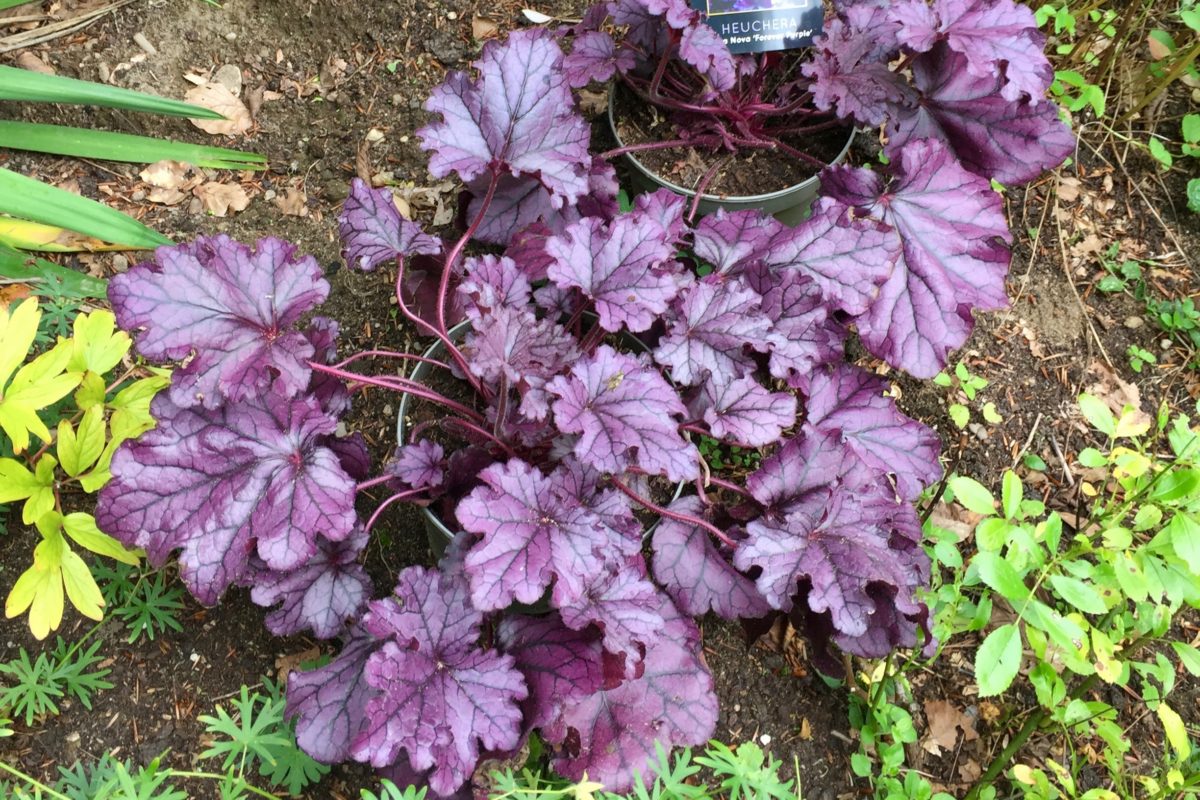
They’re also not very fussy when it comes to the soil they’re planted in. Coral bells can handle clay soil and rocky soil like true champs. And to add to their list of qualities, they are resistant to drought once the roots are established.
But over time, usually after three or four years, the stems grow old and woody. This often translates to smaller leaves and fewer flowers. If this happens to your coral bells, the best solution is to lift them out of the ground and do a root division, removing the old and dead parts. Then replant the new divisions and watch them thrive for a few more years.
3. Larkspur (Delphinium)
We tend to think of delphiniums as everlasting flowers, but they are in fact short-lived perennials. Just like with lupines, their abundant blooms and rich foliage trick the eye into thinking the plants are older than what they actually are. And just like lupines, delphiniums are prolific self-seeders.
There are over five hundred species of delphiniums, so it’s inevitable that some of them are perennials, some annuals and some short-lived perennials. The closer the delphinium is to its wild ancestors, the longer it will last in your garden.
However, it’s unlikely that this applies to what we’ve had available for sale in garden centers for the past couple of decades. While still very pretty, garden delphiniums would not have become as popular if they had kept their woodland looks.
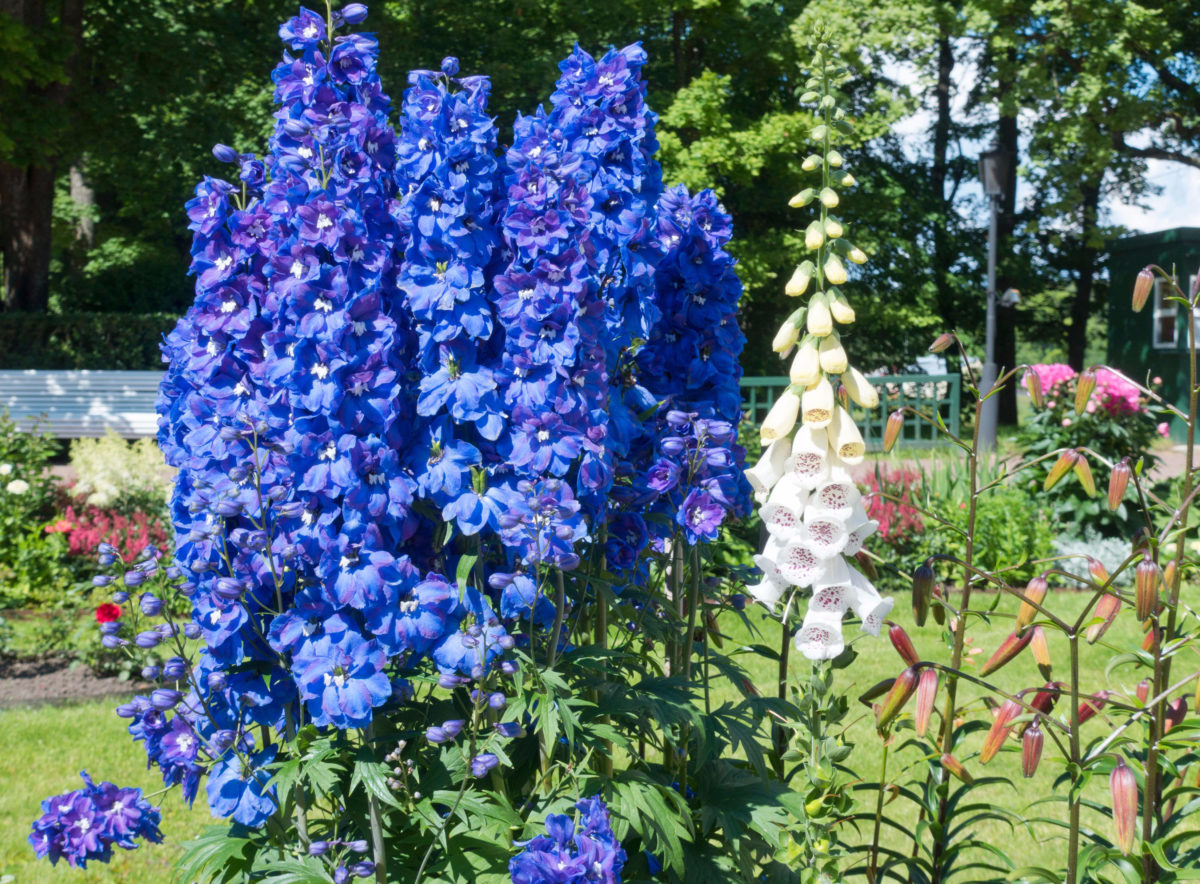
When they have been hybridized to enrich their dazzling and colorful bloom displays, they’ve also been turned into short-lived perennials.
After the third or fourth year, you’ll start noticing a decline in blooms, both in terms of richness and duration. (This is more likely to happen if the plants experience hot and dry summers.) If this happens, you can propagate them by taking basal cuttings or you can let them go to seed and start over with baby plants.
Delphiniums prefer a cool spot with some moisture, preferably in full sun. Yes, they’re a lot of work, as you need to deadhead them, stake them and prune them regularly, but they can make any garden come to life.
4. The rose campion (Lychnis coronaria, also Silene coronaria)
The rose campion is a study in how to combine two strong colors with stunning results. Its bright magenta blooms and silvery-teal foliage clash and complement at the same time.
By its third year of life, the blooming on this plant is significantly reduced, so some gardeners treat it as a biennial. You don’t have to. You can let the rose campion go to seed in the fall. The seeds will turn into new plants that flower at the end of June and all through July.
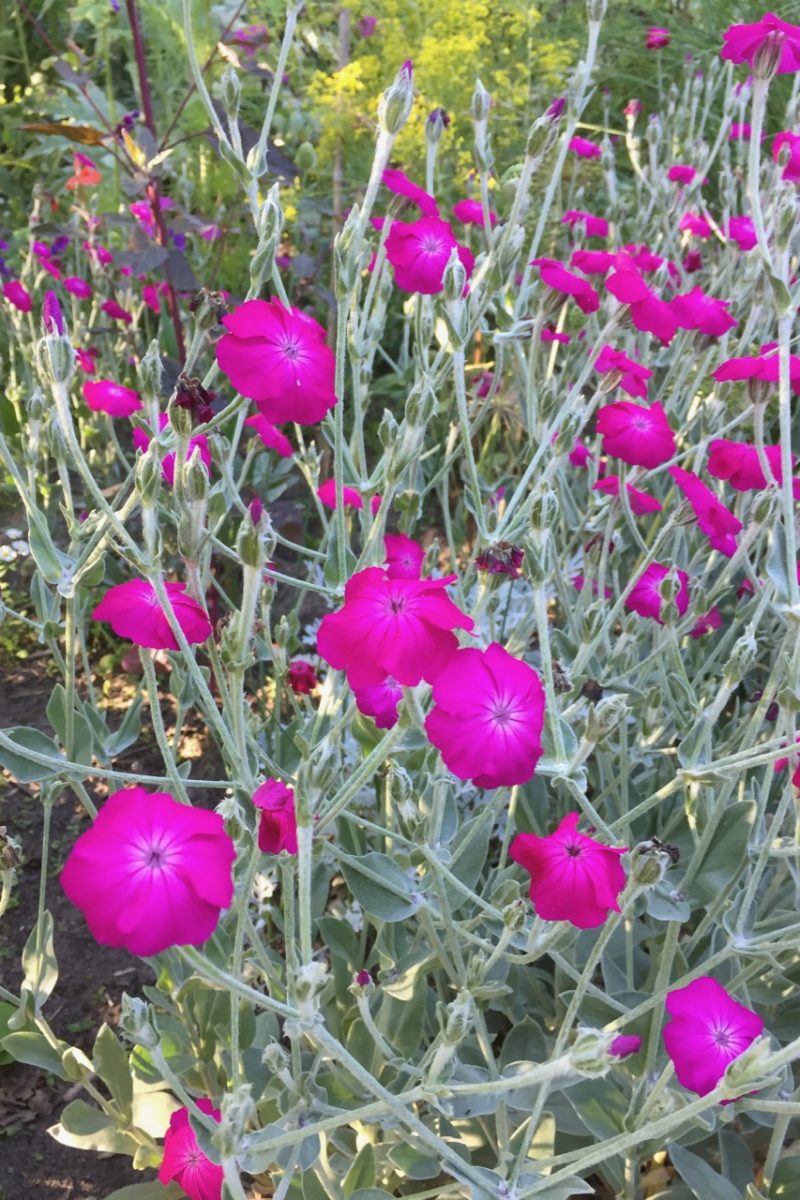
Rose campion tends to look a bit messy, so you might have to transplant some seedlings in larger clumps for a more compact look. You should also relocate any seedlings that have started growing in full shade, as the plant will not bloom unless it gets some sun.
If you’re planting it for the first time, choose a spot that gets plenty of sun, but not too much water. Always plant it in an area of your garden that drains well. Once you get this short-lived perennial established, it will be drought tolerant.
5. Flowering tobacco (Nicotiana sylvestris)
Don’t put this in your pipe and smoke it. Nicotiana sylvestris (flowering tobacco) is not the same as Nicotiana tabacum (the tobacco plant), but the two are closely related and they both belong to the nightshade family (Solanaceae).
Flowering tobacco makes the list of short-lived perennials because it’s a tender perennial, due to its Latin American roots. It’s winter hardy only up to USDA Zone 10, but you can overwinter it further North if you grow it in a sheltered location or put it under a cold frame cover before the first frost.
Some gardeners simply prune the flowering tobacco plant low to the ground in the fall and mulch around it to help it survive the winter.
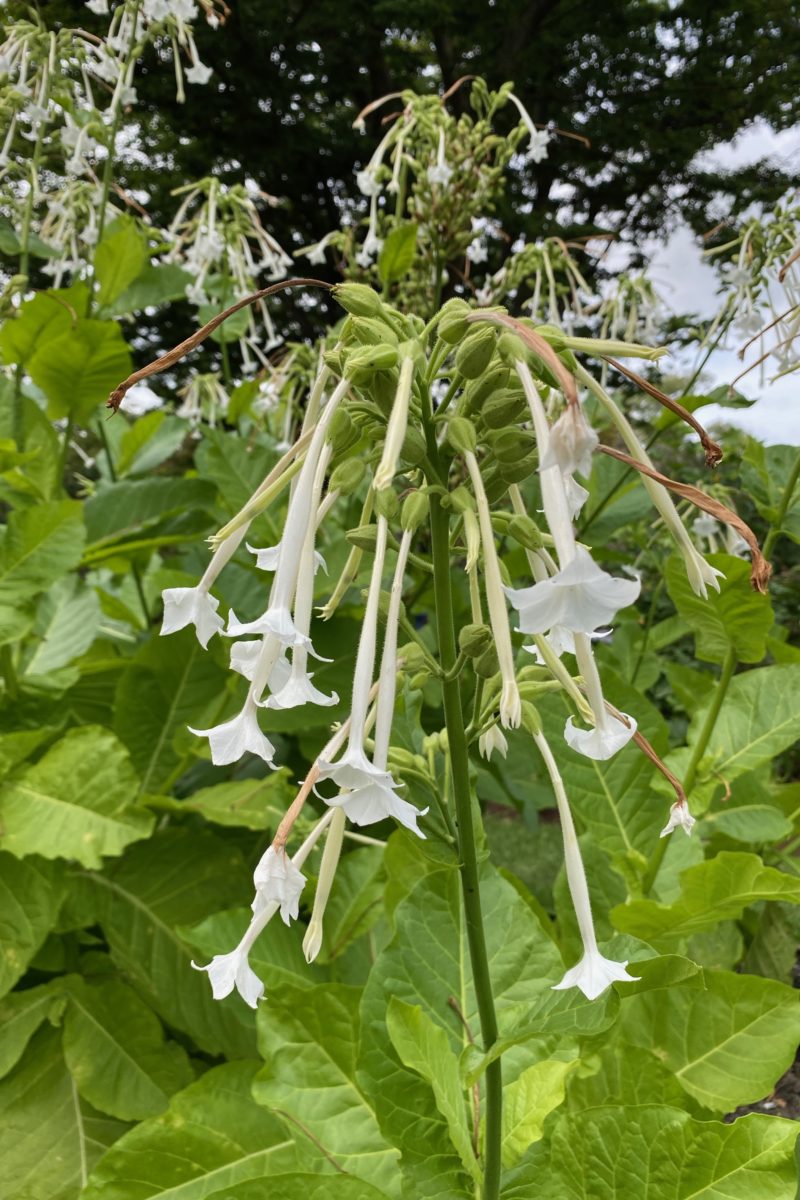
However, the flowering tobacco is such a fast grower (up to five feet – 1.5 meters – during one season) that gardeners in the North often don’t bother with frost protection and treat this one as an annual plant. If your flowering tobacco doesn’t survive the winter, simply start it again from seed in spring.
Ever since Victorian times, the flowering tobacco (also known as sweet tobacco) has been a favorite to plant along pathways and next to windows where their scent could waft and delight passers-by. The tall, trumpet-like cluster of long skinny flowers shoots out of a mound of large textured leaves. The flowers emit a fragrance that gets especially strong later in the day.
Be careful. The tiny hairs that cover the foliage may cause skin irritation to people already prone to contact dermatitis.
6. Mallow or mauve (Malva sylvestris)
When I first grew mallow in my garden, I genuinely thought it was an annual. I started it from a package of “wildflowers for pollinators” seed mix. The leaves looked a little bit worse for wear by mid-fall, so I couldn’t resist the temptation to pull the whole plant out.
It turns out that I shouldn’t have, as my mallow would have come back from the same root structure the following year. Lesson learned!
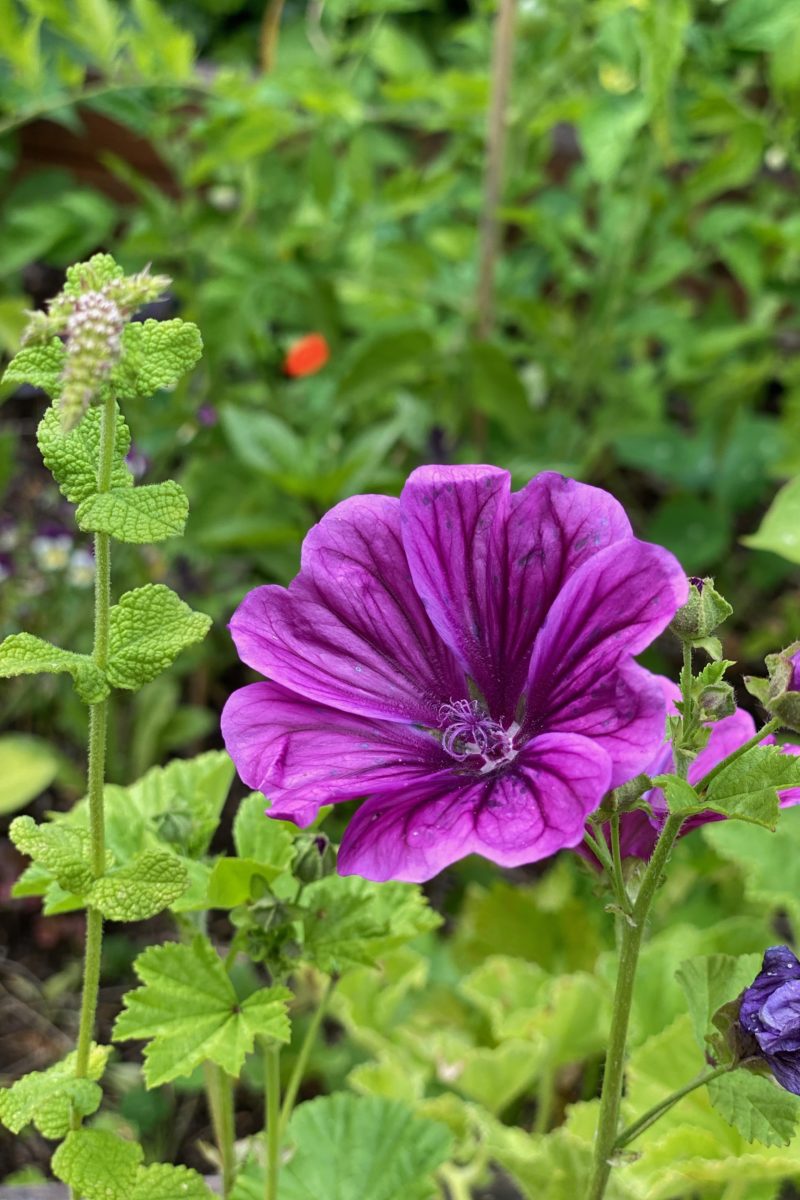
Mallow is another “wild turned ornamental” plant that has a very long blooming period. In temperate climates, it may produce flowers for around two consecutive months. It’s a tough perennial that can handle heat and drought; it’s also resistant to pests and deer, and can grow in different types of soil.
A mallow plant will come back a few seasons in a row, but will eventually lose its vigor after about three or four years. So when it goes to seed, you should collect the small ”nuts” (that look like tiny wheels of cheese) and start a few new plants. You can sow mallow seeds straight into the ground in spring.
There are a lot of cultivars of mallow in shades of purple, maroon, blue or lilac. If you’re looking for something more interesting, check out the ‘Zebrina’ series, in which the flower looks like a candy pinwheel.
Mallows are pollinator magnets and real workhorses of the true cottage garden.
7. Columbine (Aquilegia)
Some gardeners grow aquilegia as biennials, so you’ll often see them on lists of biennial flowers. Ironically, you might also find them on lists of hardy perennials. So who’s right?
The truth is somewhere in the middle when it comes to columbine. The Aquilegia canadensis variety (also known as the red columbine or the Eastern columbine), native to North America, blooms strongly in its second year (like a biennial). However, the same plant will bloom repeatedly (like a perennial), although the bloom will decline over time.
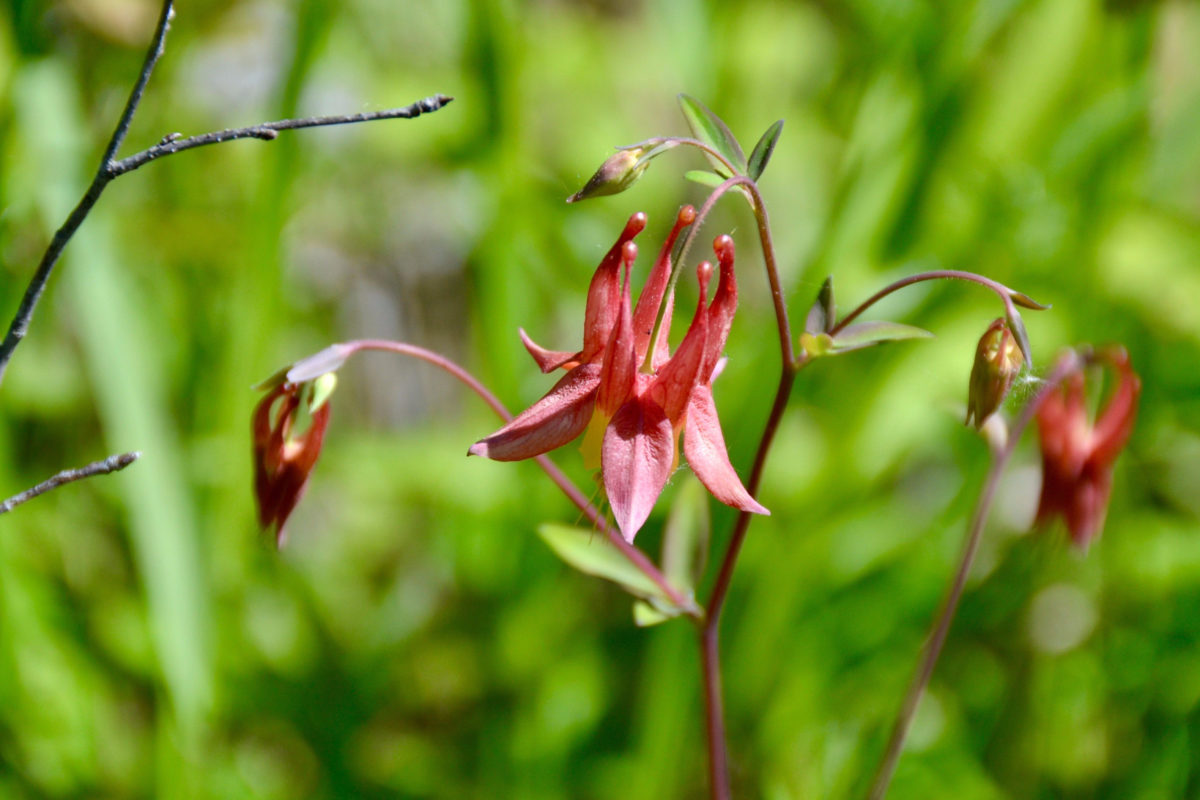
Columbine can also bloom in the first year, if you sow it in spring. However, if you start your seeds in summer, you will get more blooms the following spring.
You should plant columbine in rich well-drained soil in full sun or part shade. If you do plant it in full sun, remember that it also likes moisture (it is a woodland plant at heart), so it’s better if it gets gentler morning sun rather than strong afternoon sun.
Columbines are prolific self-seeders close to the mother plant, so you won’t need to do too much work to have this plant in your garden for years.
8. Cardinal flower (Lobelia cardinalis)
Speaking of cottage gardens, here’s another long-blooming staple popular in this type of garden design. Lobelia can have its bright red flowers on display for six weeks or more from mid to late summer. In some areas, it stays in bloom all through September.
Due to its wetland roots, where it grows in swamps, marshes and riverbanks, the cardinal flower does well if planted in full sun and in soil that stays relatively moist. But it can also handle part shade, as long as it gets at least three hours of sun a day.
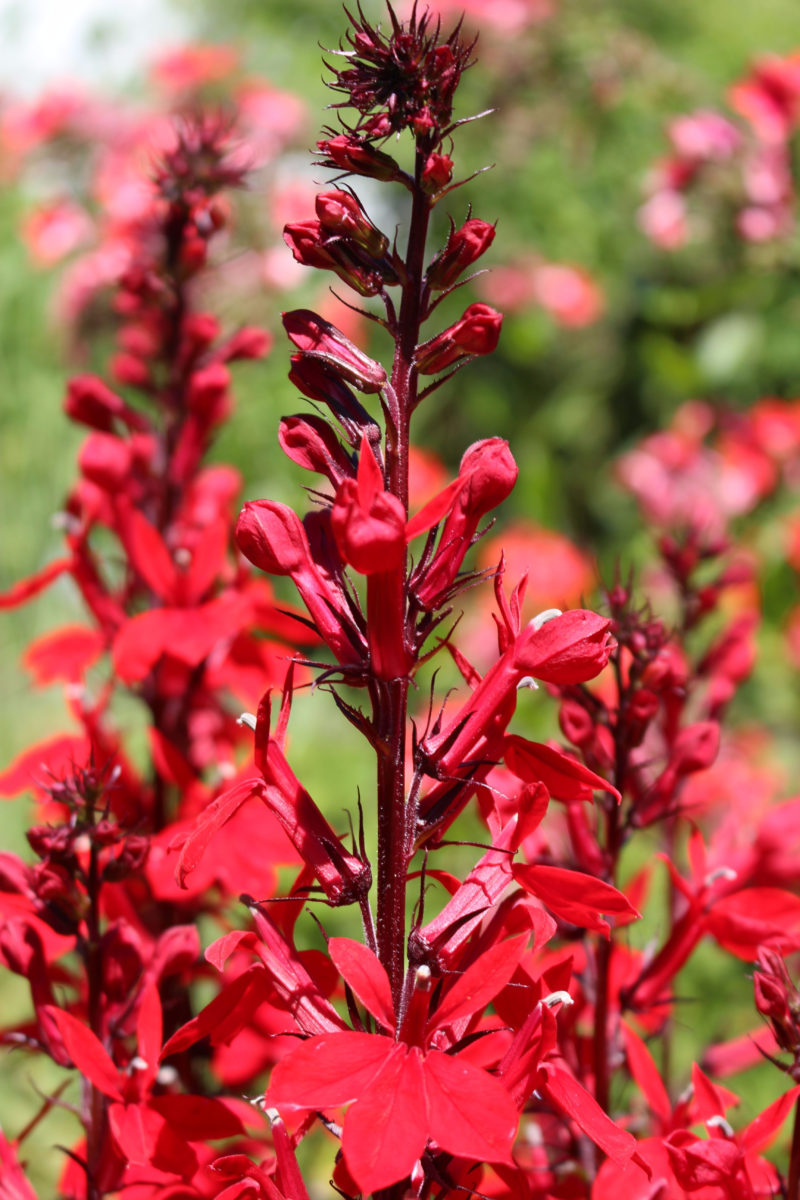
Lobelia is a short-lived perennial that might need a bit of extra help for reseeding. Just like its plant parent, the seeds and seedlings need a bit of extra moisture to develop into fully-grown plants. So starting it indoors (to better control moisture and sun exposure) every couple of years will be just the ticket to always having lobelia in bloom in your garden.
Lobelia’s bright colors make it the perfect host plant for bees, butterflies and hummingbirds. Another bonus point is the fact that it’s not a favorite with deer and rabbits.
9. Yarrow (Achillea)
In my experience, yarrow is the quintessential low-maintenance plant. It’s a vigorous bloomer that comes in a variety of heights and color combinations. It’s drought-tolerant (in fact, it prefers to stay a bit on the dry side) and does well in just about any type of soil.
Yarrow has flat flower heads that look like a wildlife disco in the middle of summer. It attracts bees and butterflies, but does not attract deer. What more could you ask of it?
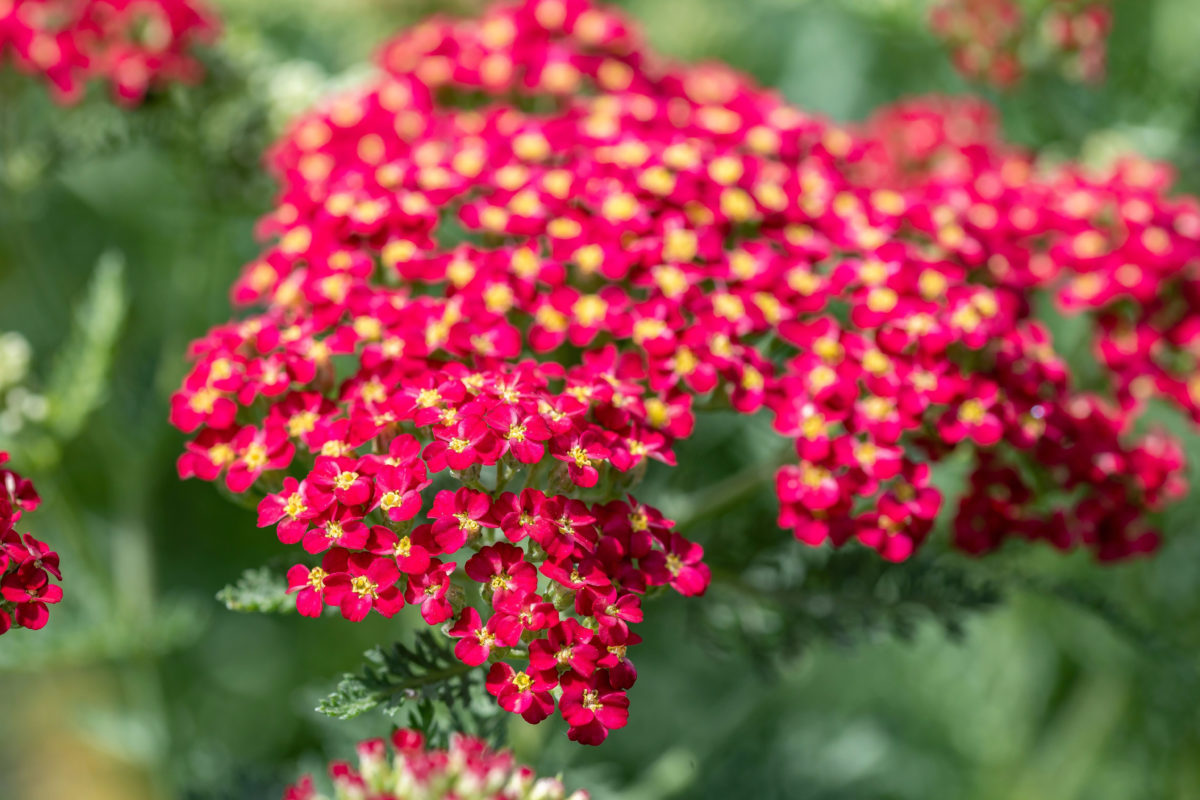
However, after a few seasons out in the garden, the flowering of older yarrow plants peters off. If you start noticing that your achillea looks a bit worse for wear, all you have to do is dig out and lift the root structure, divide it and replant it. You can do all this in the fall, right after you’ve pruned your fall perennials.
The following spring, your new yarrow transplants will shoot up richer and stronger than their older counterparts. Achillea has so many gorgeous cultivars that you could fill an entire garden just with its stunning colorful blooms.
10. Arctic poppies (Papaver nudicaule)
The Arctic poppy (also known as the Iceland poppy) may not be as popular as the oriental poppy (Papaver orientale). But once you start growing it, you’ll be left wondering why isn’t it more widespread. Perhaps the answer is because it’s a short-lived perennial that makes a good first impression, but then leaves you wanting more.
The Arctic poppies put out a really dramatic first-year display of blooms over a few weeks in their first summer. Then in subsequent years, the blooms get smaller and smaller.
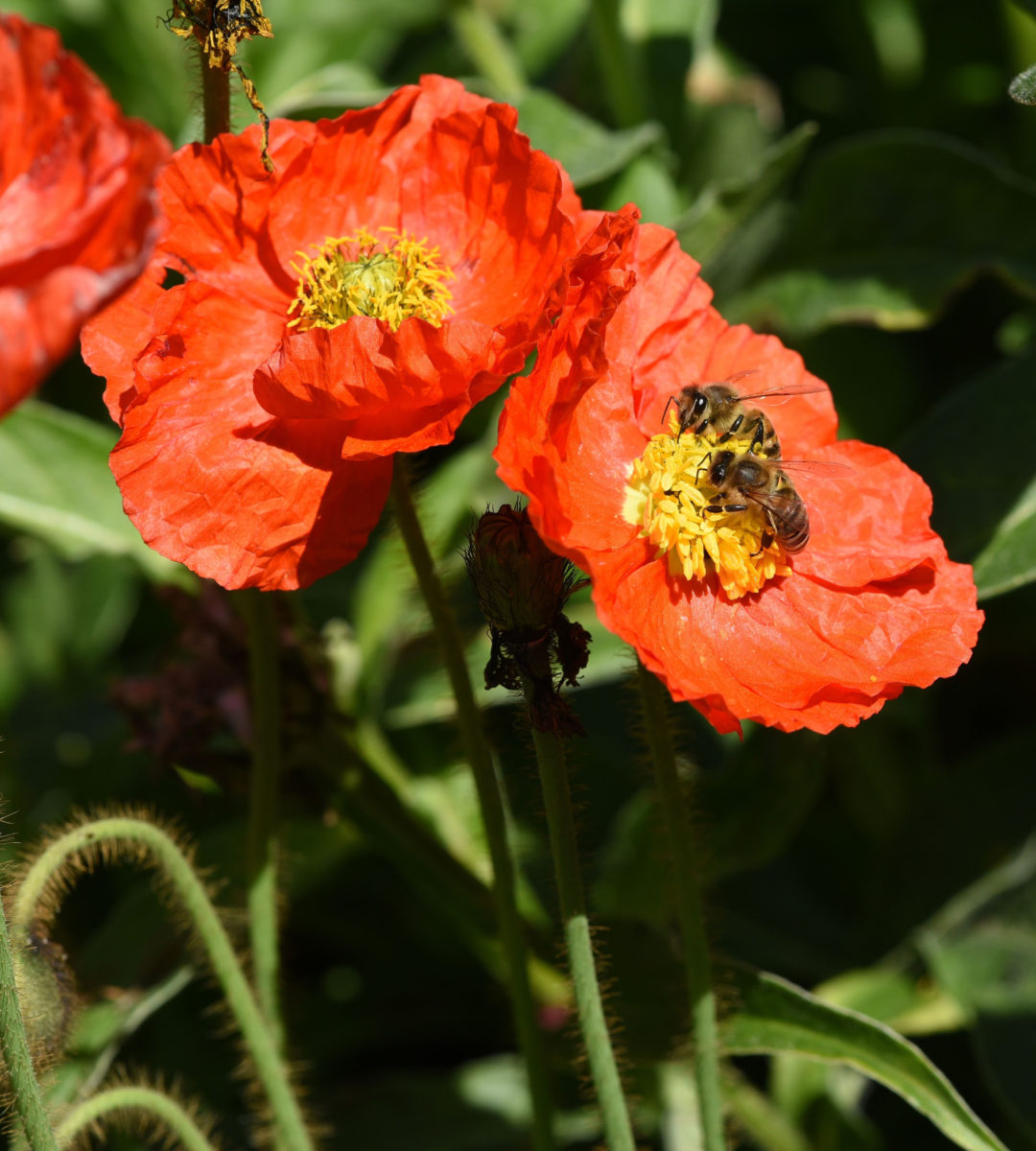
In the cut flower industry, Arctic poppies are grown as annuals in order to take full advantage of that first year bloom. But in a garden setting, you can grow this plant as a biennial. If you sow it directly in the ground in full sun in the summer, it will bloom profusely the following year. Then you can intersow your poppy patch every year to always have first-year poppies in bloom.
Short-lived perennials are popular for a reason: their first few seasons of bloom are unrivaled by their long-lived counterparts (that often need three years or so to reach peak bloom). They are the de facto instant gratification choice for the modern gardener. And if you give them a chance (and get ahead of them just for one season), you’ll forget any hesitation you may have had in the first place.
